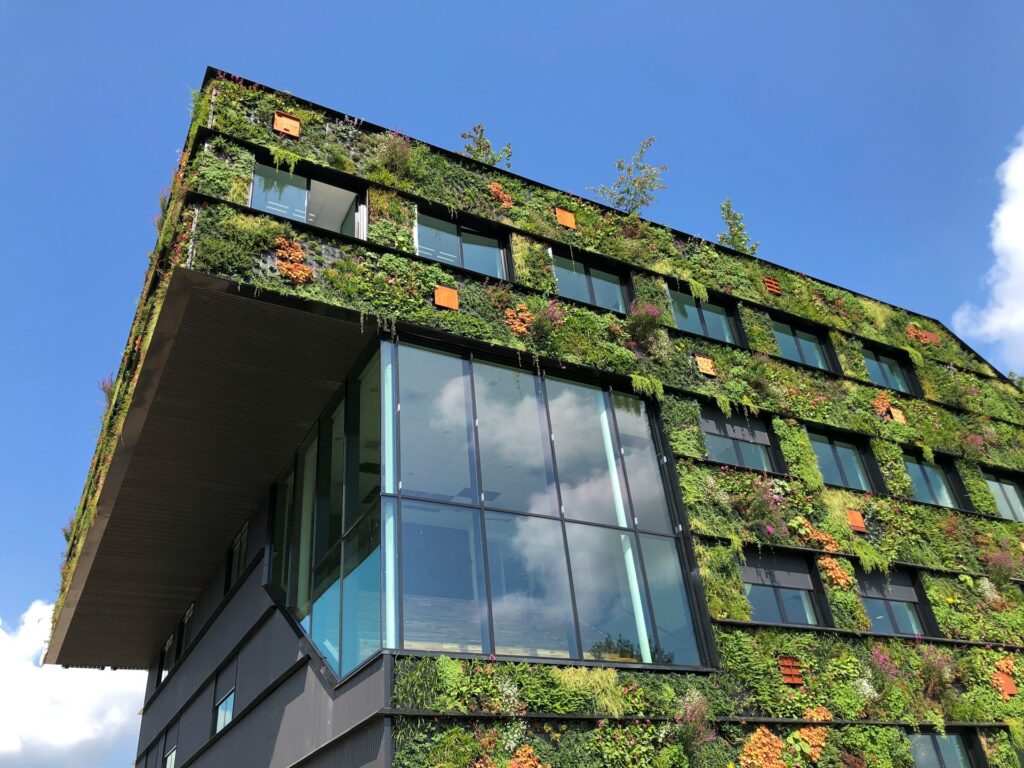
In today’s world, sustainability is more than just a buzzword. It’s a necessity. With urbanization and industrial growth taking a toll on the environment, it’s imperative to adopt green building practices.
These eco-friendly construction methods not only reduce the environmental impact but also promote a healthier lifestyle.
In this blog post, we’ll explore how construction methods can lead us to a sustainable future. You’ll learn about various eco-friendly construction methods and their benefits, shedding light on why companies like Lions Concrete Cutting and Coring are leading the way in sustainable construction.
What Are Green Building Practices?
Green building practices refer to environmentally responsible and resource-efficient methods for constructing buildings. These eco-friendly construction methods aim to reduce the overall impact on human health and the environment.
By focusing on sustainability from the design phase through to construction, these practices ensure that buildings are energy-efficient, resource-efficient, and environmentally friendly. The benefits of adopting green building practices are numerous:
- Reduced Carbon Footprint: By utilizing energy-efficient design and sustainable materials, green buildings significantly lower carbon emissions, helping combat climate change.
- Improved Indoor Air Quality: Green buildings use materials and ventilation systems that enhance indoor air quality, which is crucial for the health and well-being of occupants.
- Lower Operating Costs: Due to energy savings and efficient resource use, green buildings often have reduced operating costs, making them cost-effective in the long run.
Key components include:
- Energy-Efficient Design: Incorporating renewable energy sources and optimizing building performance.
- Sustainable Materials: Using eco-friendly construction methods and materials that have a minimal environmental impact.
- Waste Reduction: Implementing strategies to minimize waste during construction and throughout the building’s lifecycle.
- Water Conservation: Utilizing systems and technologies that reduce water consumption and promote efficient water use.
By integrating these elements, builders can create structures that are not only sustainable but also cost-effective in the long run. This multifaceted approach ensures that eco-friendly construction methods are both practical and beneficial, proving to be a smart choice for future developments.
Sustainable Construction Materials
Sustainable construction is becoming increasingly important in today’s eco-conscious world. Incorporating eco-friendly construction methods can significantly impact our environment by conserving resources and reducing energy consumption. Here are some key approaches:
- Recycled Materials: Utilizing reclaimed wood, recycled metal, and recycled plastic helps conserve natural resources and minimize waste.
- Energy-Efficient Materials: Insulated concrete forms and low-emissivity windows maintain indoor temperatures, reducing the need for heating and cooling systems.
- Natural Materials: Bamboo, straw bales, and rammed earth offer excellent insulation properties while being eco-friendly.
By integrating these sustainable construction materials, we can create buildings that are both environmentally friendly and energy-efficient.
Water Conservation Techniques
Implementing effective water conservation techniques is essential for sustainable living and green building practices. Consider adopting the following methods to reduce water consumption and support eco-friendly construction:
- Rainwater Harvesting: Collect and store rainwater for reuse in residential and commercial buildings, significantly cutting down on municipal water demand.
- Low-Flow Fixtures: Install low-flow faucets, showerheads, and toilets to drastically reduce water usage without sacrificing performance.
- Greywater Recycling: Treat and reuse wastewater from showers, sinks, and washing machines for non-potable purposes like irrigation and toilet flushing, potentially reducing water consumption by up to 50%.
By integrating these water conservation techniques, you can contribute to more sustainable and efficient practices.
Energy-Efficient Design
Implementing eco-friendly construction methods can significantly enhance a building’s energy efficiency while reducing its environmental impact. Here are some key strategies:
- Passive Solar Design: By strategically positioning buildings to maximize natural sunlight for heating and lighting, you can reduce reliance on artificial heating systems. Using materials that absorb and slowly release solar heat is a pivotal aspect of this approach.
- Energy-Efficient Lighting: Switching to LED bulbs, which use up to 80% less energy than traditional incandescent bulbs and last much longer, can drastically cut down energy consumption.
- Smart Thermostats: These devices allow for precise control over heating and cooling systems by learning occupants’ habits and adjusting temperatures accordingly, optimizing energy use and minimizing waste.
By adopting these methods, you’ll not only promote sustainability but also enjoy cost savings and increased comfort.
Waste Reduction Strategies
Implementing waste reduction strategies in construction is essential for sustainable development. Here are three effective green building practices:
- Construction Waste Management: Develop a waste management plan to sort and recycle materials like concrete, wood, and metal. This minimizes waste during the building process.
- Deconstruction Instead of Demolition: Choose deconstruction to recover and reuse building materials, reducing waste and conserving resources.
- Modular Construction: Build sections off-site in a controlled environment to reduce waste, minimize site disruption, and speed up project completion.
Adopting these sustainable construction methods not only conserves resources but also promotes environmental responsibility.
Indoor Environmental Quality
Proper indoor environmental quality is essential for any building, and integrating green building practices can make a significant difference. Here are three key strategies to enhance indoor air quality:
- Ventilation Systems: Utilize energy recovery ventilators (ERVs) and heat recovery ventilators (HRVs) to remove stale air and introduce fresh air without substantial energy loss.
- Low-VOC Materials: Opt for low-VOC (volatile organic compounds) paints, adhesives, and finishes to minimize harmful chemicals and promote a healthier environment.
- Natural Lighting: Incorporate natural lighting through large windows, skylights, and light tubes to reduce the need for artificial lighting and improve occupants’ well-being.
Implementing these eco-friendly construction methods not only boosts indoor air quality but also supports sustainable development.
Conclusion
The adoption of green building practices and eco-friendly construction methods is no longer just an option but a necessity for our planet’s future. Sustainable construction offers numerous benefits, from reducing our carbon footprint to improving indoor air quality and lowering long-term costs.
By embracing techniques such as energy-efficient design, water conservation, and the use of sustainable materials, we can create buildings that not only serve our needs but also respect and protect our environment.
The shift towards these practices represents a significant step in our journey towards a more sustainable world.
As individuals, businesses, and communities continue to prioritize and implement these green building practices, we move closer to a future where our built environment exists in harmony with nature, contributing to, rather than detracting from, the health of our planet.
Last modified: October 12, 2024








